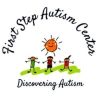Introduction: ABA, or Applied Behavior Analysis, is a widely recognized and effective therapy for children with autism. In this blog, we’ll explore what ABA therapy is, how it works, and the many ways it can benefit children with autism. Whether you’re a parent seeking information or someone interested in autism therapy, read on to discover how ABA can make a meaningful difference in the lives of autistic children. ABA Therapy and Autism.

1. What Is ABA Therapy?
- ABA stands for Applied Behavior Analysis, a structured and evidence-based therapy approach.
- It focuses on understanding and changing behaviors to improve a child’s quality of life.
2. Core Principles of ABA:
- ABA therapy is based on several core principles, including breaking down complex skills into smaller, manageable steps and using positive reinforcement to motivate learning.
3. Individualized Treatment Plans:
- ABA therapists create customized treatment plans tailored to each child’s unique needs and abilities.
- These plans address a wide range of skills, from communication and social interaction to daily living and academic skills.
4. Behavior Analysis:
- ABA therapists carefully observe and analyze a child’s behavior to identify areas of strength and areas needing improvement.
- They use data-driven methods to track progress and adjust interventions as needed.
5. Positive Reinforcement:
- ABA therapy utilizes positive reinforcement, such as praise or rewards, to encourage desired behaviors.
- This motivates children to learn new skills and reduce challenging behaviors.
6. Communication and Social Skills:
- ABA therapy helps children with autism improve their communication and social interaction skills.
- It can teach them to express their needs, engage with others, and understand social cues.
7. Reducing Problem Behaviors:
- ABA is effective in reducing problem behaviors like tantrums, aggression, and self-injury.
- It replaces these behaviors with more appropriate alternatives.
8. Academic Success:
- ABA therapy supports academic development by helping children with tasks such as reading, writing, and math.
- It also fosters skills necessary for classroom success, like following instructions and staying on task.
9. Independence and Daily Living:
- ABA helps children become more independent in daily tasks like dressing, grooming, and mealtime routines.
- It enhances their ability to function more effectively in daily life.
10. Lifelong Skills and Quality of Life: – The skills learned through ABA therapy can have a lasting positive impact on a child’s life, helping them thrive as they grow. – Families often report improvements in their child’s overall quality of life and their ability to participate in community activities.
Conclusion: ABA therapy is a powerful tool for children with autism, offering a structured and evidence-based approach to improving behavior and skills. By addressing specific challenges and fostering development in a supportive and individualized way, ABA therapy can help children with autism unlock their full potential and lead fulfilling lives. If you’re considering ABA therapy for your child, consult with a qualified therapist or provider to explore how it can best meet your child’s unique needs and goals.
For more information and resources on autism, visit our website at www.fsautismcen.org. Together, we can navigate this journey with knowledge, understanding, and unwavering support. Advocacy and Autism Parenting.

